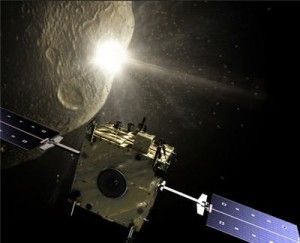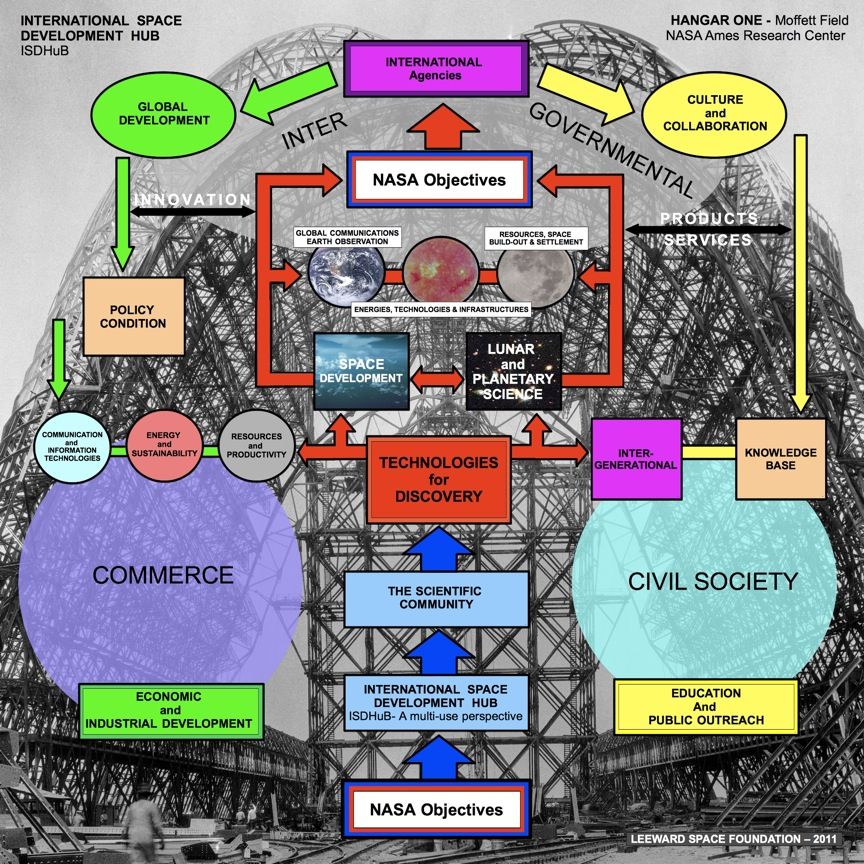Institute or Physical and Theoretical Chemistry, University of Tübingen, Auf der Morgenstelle A, 72076 Tübingen, F.R.G.
Abstract
CERN’s apparent superluminality result can be partially explained subluminally.
(October 24, 2011)
Simultaneity on a rotating sphere is non-unique — forming not a circle but a helix at a given latitude — as is well known, cf. [1 ] and references quoted there.
The neglected deviation from global simultaneity — being incorporated by design in the Global Positioning System employed by CERN [2] — is 0.1032 microseconds or 30 meters for an equatorial circle [1]. On the mean longitude of Geneva and Gran Sasso, the full-circle deviation is about half as large: 0.05 microseconds or 15 meters.
Since the latitudinal separation between Geneva and Gran Sasso (7.3 degrees) covers only the fiftieth part of a circle, the applicable deviation is 50 times smaller: 1 nanosecond or 0.3 meters. The sign is the same as that found empirically by CERN, but the magnitude of the deviation measured by CERN is 60 times larger than predicted: 60.7 nanoseconds or 18 meters [2]. Thus, CERN’s result has been qualitatively confirmed from first principles for the first time, but so with only 2 percent of its size.
Experience teaches that once a mistake has been found in the design or interpretation of an experiment, further errors along the same line are likely to be unearthed. Whether or not there is a chance to quantitatively compress the improved new result by a factor of 60 is, of course, open.
A minor possibility of improvement is as follows. CERN failed to measure the light flight time between two long parallel rods of 35km length, one erected above the neutrino cannon at CERN and the other above the detector in the Gran Sasso. Two ultrahigh balloons could do the job in principle; or else a chain of alpine mirrors could be used as a substitute necessitating a more complicated discussion. This proposal was made because experience tells that radically new measured data ought to be compared with measured data directly. A second experimental proposal offers itself: To repeat the experiment in the U.S., not in the same but in the opposite (East-West) direction. In this case the rotation-specific apparent superluminality will predictably give rise to a matching subluminality. Finally, I dare mention that the present experiment — unlike other current experiments at CERN – deserves planet-wide support for its ingenuity and innocuousness.
To conclude, a partial subluminal explanation for the newest CERN experiment has been offered. I thank Eric Penrose and Walter Wagner for discussions. (For J.O.R.)
References
[1] O.E. Rossler, D. Fröhlich, N. Kleiner and F.J. Müller, Nonunique simultaneity on isochrones of the rotating disk: a timeloop in special relativity? Journal of New Energy 6(4), 210–214 (2002).
[2] T. Adam, N. Agafonova, A. Aleksandrov, O. Altinok, P. Alvarez Sanchez, S. Aoki, A. Ariga, T. Ariga, D. Autiero, A. Badertscher, A. Ben Dhahbi, A. Bertolin, C. Bozza, T. Brugiére, F. Brunet, G. Brunetti, S. Buontempo, F. Cavanna, A. Cazes, L. Chaussard, M. Chernyavskiy, V. Chiarella, A. Chukanov, G. Colosimo, M. Crespi, N. D’Ambrosios, Y. Déclais, P. del Amo Sanchez, G. De Lellis, M. De Serio, F. Di Capua, F. Cavanna, A. Di Crescenzo, D. Di Ferdinando, N. Di Marco, S. Dmitrievsky, M. Dracos, D. Duchesneau, S. Dusini, J. Ebert, I. Eftimiopolous, O. Egorov, A. Ereditato, L.S. Esposito, J. Favier, T. Ferber, R.A. Fini, T. Fukuda, A. Garfagnini, G. Giacomelli, C. Girerd, M. Giorgini, M. Giovannozzi, J. Goldberga, C. Göllnitz, L. Goncharova, Y. Gornushkin, G. Grella, F. Griantia, E. Gschewentner, C. Guerin, A.M. Guler, C. Gustavino, K. Hamada, T. Hara, M. Hierholzer, A. Hollnagel, M. Ieva, H. Ishida, K. Ishiguro, K. Jakovcic, C. Jollet, M. Jones, F. Juget, M. Kamiscioglu, J. Kawada, S.H. Kim, M. Kimura, N. Kitagawa, B. Klicek, J. Knuesel, K. Kodama, M. Komatsu, U. Kose, I. Kreslo, C. Lazzaro, J. Lenkeit, A. Ljubicic, A. Longhin, A. Malgin, G. Mandrioli, J. Marteau, T. Matsuo, N. Mauri, A. Mazzoni, E. Medinaceli, j, F. Meisel, A. Meregaglia, P. Migliozzi, S. Mikado, D. Missiaen, K. Morishima, U. Moser, M.T. Muciaccia, N. Naganawa, T. Naka, M. Nakamura, T. Nakano, Y. Nakatsuka, D. Naumov, V. Nikitina, S. Ogawa, N. Okateva, A. Olchevsky, O. Palamara, A. Paoloni, B.D. Park, I.G. Park, A. Pastore, L. Patrizii, E. Pennacchio, H. Pessard, C. Pistillo, N. Polukhina, M. Pozzato, K. Pretzl, F. Pupilli, R. Rescigno, T. Roganova, H. Rokujo, G. Rosa, I. Rostovtseva, A. Rubbia, A. Russo, O. Sato, Y. Sato, A. Schembri, J. Schuler, L. Scotto Lavina, J. Serrano, A. Sheshukov, H. Shibuya, G. Shoziyoev, S. Simone, M. Sioli, C. Sirignano, G. Sirri, J.S. Song, M. Spinetti, N. Starkov, M. Stellacci, M. Stipcevic, T. Strauss, P. Strolin, S. Takahashi, M. Tenti, F. Terranova, I. Tezuka, V. Tioukov, P. Tolun, T. Tran, S. Tufanli, P. Vilain, M. Vladimirov, L. Votano, J.-L. Vuilleumier, G. Wilquet, B. Wonsak, J. Wurtz, C.S. Yoon, J. Yoshida, Y. Zaitsev, S. Zemskova, A. Zghiche et al. (117 additional authors not shown), Measurement of the neutrino velocity with the OPERA detector in the CNGS beam, http://arxiv.org/abs/1109.4897 (Sept. 22, 2011).
[Main result, quoted from the abstract: “An early arrival time of CNGS muon neutrinos with respect to the one computed assuming the speed of light in vacuum of (60.7 ± 6.9 (stat.) ± 7.4 (sys.)) ns was measured. This anomaly corresponds to a relative difference of the muon neutrino velocity with respect to the speed of light (v-c)/c = (2.48 ± 0.28 (stat.) ± 0.30 (sys.)) ×10–5.”]
(Paper simultaneously submitted to Nature and Science)

